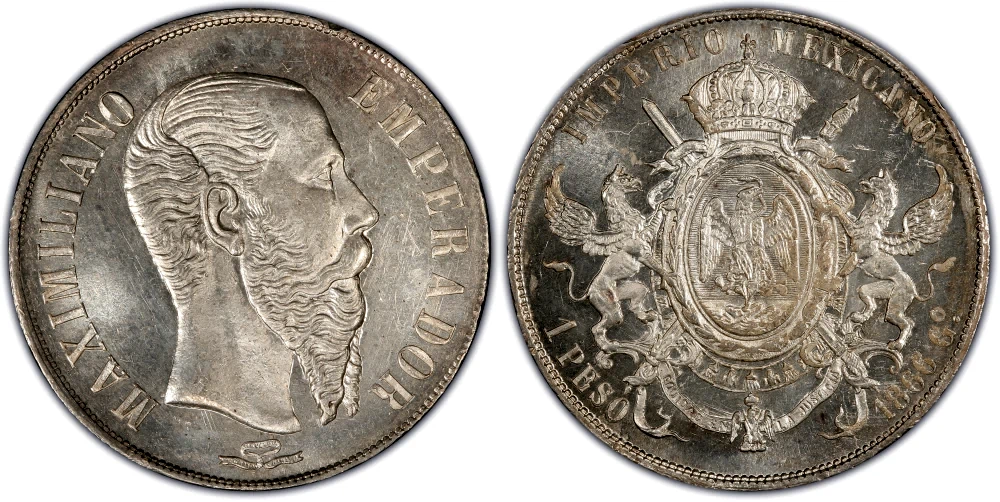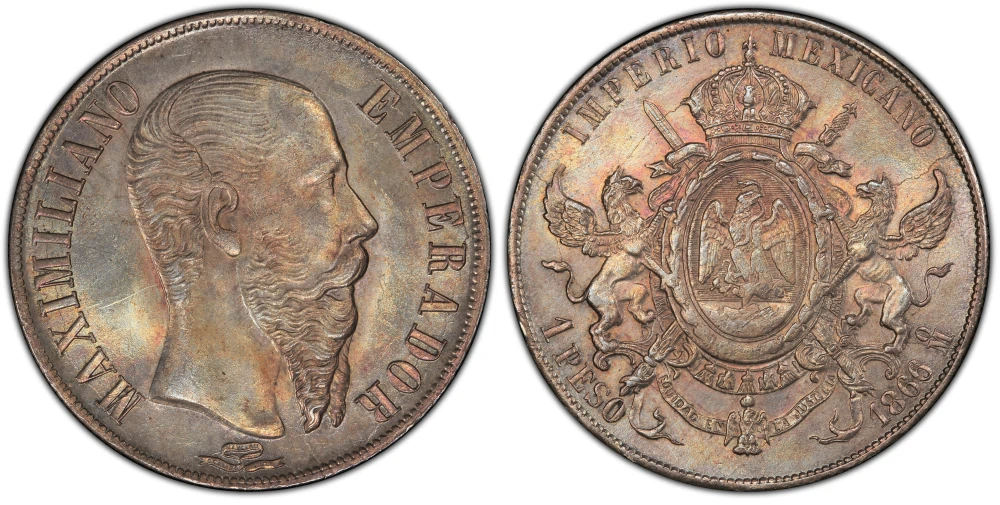Maximiliano de Mexico (1864-1867)
The Rara Avis Collection feaures two of the best extant Maximiliano pesos; the 1866-Go Guanajuato Peso MS66 and the 1866-Mo Mexico City Small Letters Peso MS66+.
The imperial coinage of Maximiliano is known for its intricate design and attention to detail. The coins feature the emperor's portrait on one side, surrounded by symbols of his power and authority. On the other side, you'll find the Mexican coat of arms, which was redesigned to reflect Maximilian's influence.
Maximilian von Habsburg, also known as Maximiliano I of Mexico, was an Austrian archduke who briefly ruled as the Emperor of Mexico from 1864 to 1867. His reign was part of a complex series of events in Mexico in the mid-19th century, including the Mexican-American War, the French intervention in Mexico, and the Mexican Civil War.
In 1861, a conservative Mexican faction invited Maximilian to take the throne to stabilize the country and prevent the liberal, republican forces from taking control. Maximilian agreed, and with the French army's support, he established a puppet government in Mexico City. However, his rule was only partially accepted by the Mexican people, and he faced opposition from various groups.
Maximilian's reign was marked by a number of significant social, political, and economic reforms, including the establishment of a new constitution, the abolition of the death penalty, and the implementation of labor protections for workers. However, his rule was also characterized by authoritarianism and repression, and his policies failed to win over the support of the Mexican people.
In 1867, Maximilian was captured by republican forces and was subsequently executed. His brief reign had a little lasting impact on Mexican history. Still, it remains an important example of foreign intervention in Latin America and the challenges of building a stable and democratic government in a country with a complex political and social upheaval history.

